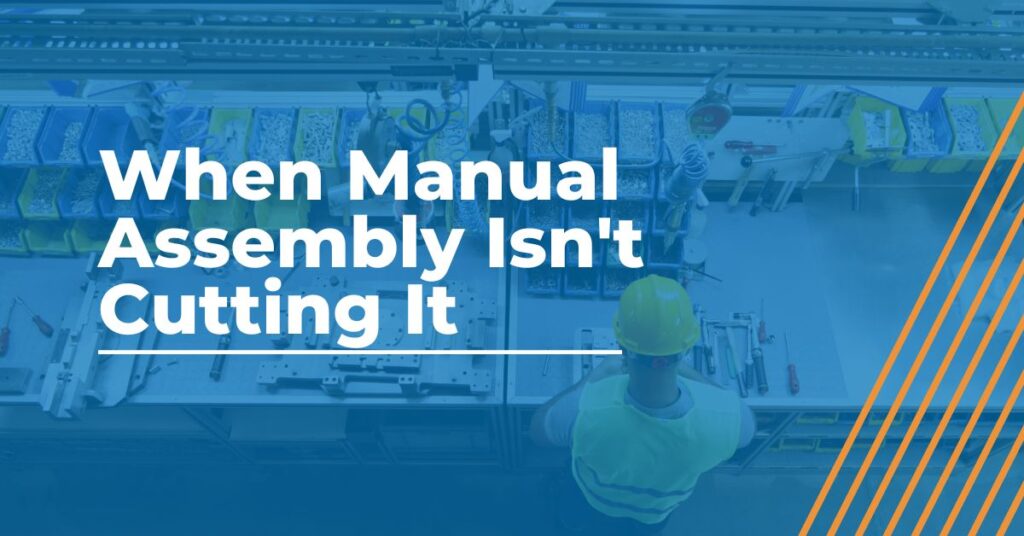
Automation Equipment vs Manual Assembly: Should You Make the Switch?
Here at AMS we often talk about automating manufacturing processes and implementing automation equipment to streamline operations. Still you may be wondering if automating would help your company and what processes could be automated. Especially with the ongoing labor shortage, you have probably considered the benefits of automation equipment vs. manual assembly.
Let’s help you clarify your options.
Automation Equipment and Labor Woes
As you have probably experienced, there has been an ongoing issue with labor shortages in manufacturing. Many companies have turned to automated equipment as a solution. Whether it is semi-automation or complete automation, machines can help production become more efficient and less labor intensive.
That being said, companies cannot go straight to being fully automated, there is a process to go through and factors to consider when deciding to move up to semi-automation or complete automation. “Crawl, walk, run” is an analogy used to explain the progression to automated manufacturing.
Crawl: Manual Assembly
- In the medical manufacturing industry, businesses must start out with no automation in order to adhere to the FDA regulations. This is for smaller businesses operating in the FDA class I. Examples of products that are manually assembled are hospital beds, handheld surgical instruments and elastic bandages.
Walk: Semi-Automation
- Semi-automation is usually implemented once a company has grown a bit and set their production standards. The shift to semi-automation allows for greater efficiencies in production. This scenario aligns with the class II FDA regulation, which has protocols that must be followed. Semi-automation can offer the benefits of replacing labor, even when a company is not able to completely automate all of its systems.
Run: Complete Automation
- Finally, there is the option of becoming fully automated (while adhering to class III FDA regulations if required). Completely automating a production process, eliminates the need for any human interaction. Full automation, coupled with automated feeding assemblies allows for large increases in production.
What Automated Equipment Can You Implement?
If you want to implement the use of automated equipment in your company, the next question arises of, what can you automat? The process of manufacturing is complex with many components, so which parts of your operations would be best suited for automated equipment vs manual assembly? When determining what to automate you can consider the 4D’s. If a process falls into one of these four categories, it may present an opportunity for automation.
The first D stands for dull. These processes are repetitive and time-consuming, ones that would be easy for an automated machine to take over because they don’t require much thought.
The next D is dirty. This describes jobs that most people would find undesirable.
The fourth is dangerous. These jobs run the risk of injury or harm to a human worker.
Finally, the last D stands for difficult. These processes are ripe for automation because they require a high level of concentration to complete. Medical manufacturing often includes difficult operations.
Ready for Automation Equipment?
After analyzing the 4D’s, the labor shortage and the “crawl, walk, run” analogy, it should be easier for you to assess your suitability for automation. If you want to discuss implementing automated equipment into your manual workplace, contact us or book an appointment.
